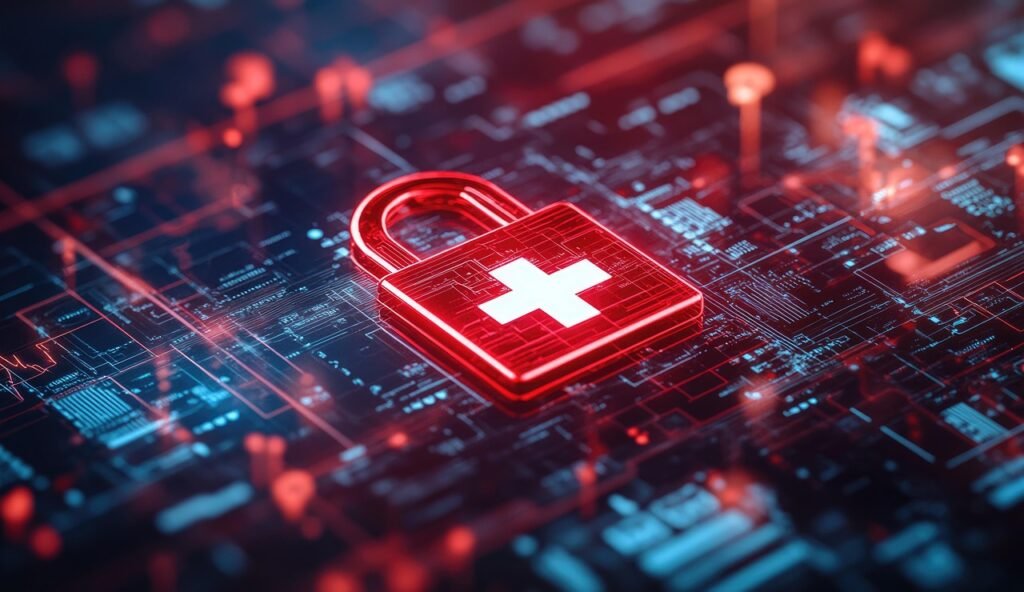Discover how blockchain healthcare transparency is revolutionizing resource allocation in healthcare systems, ensuring fair distribution, reducing fraud, and improving patient care.
Introduction
In healthcare, transparency is essential for ensuring that resources—such as medical supplies, funding, and personnel—are distributed fairly and efficiently. However, inefficiencies, corruption, and lack of oversight often lead to inequitable access to care. Blockchain healthcare transparency is the game-changer that the industry has long needed, offering a way to track, verify, and audit healthcare resources in real time.
By leveraging blockchain technology, healthcare providers can ensure that resources are allocated transparently, ethically, and in alignment with patient needs. This article explores how blockchain is transforming healthcare resource management and improving care delivery across the globe.
1. What is Blockchain Healthcare Transparency?
Blockchain technology is a decentralized and immutable digital ledger that records transactions in a secure, transparent, and verifiable way. In healthcare, blockchain healthcare transparency refers to the use of blockchain to track and verify the distribution of resources, ensuring accountability at every level.
Unlike traditional centralized systems, blockchain’s distributed ledger ensures that all transactions are recorded in real-time and cannot be altered or erased. This makes it particularly useful in environments where data security and transparency are paramount—like healthcare.
2. How Blockchain Improves Healthcare Resource Allocation
Eliminating Fraud and Reducing Waste
Fraud and waste in healthcare systems are major concerns, especially when it comes to the allocation of funds, equipment, and medical supplies. By using blockchain to record every transaction, organizations can create an immutable history of how resources are allocated and used.
For example, medical supplies such as ventilators or vaccines can be tracked from the manufacturer to the healthcare provider, ensuring that they are used where needed most and preventing misuse or diversion. This level of transparency ensures accurate reporting and responsible distribution of resources.
Ensuring Fair Distribution
One of the biggest challenges in healthcare is ensuring that resources are distributed equitably, especially in times of crisis. Whether it’s vaccines during a pandemic or essential medications for chronic conditions, blockchain ensures that these resources reach the right places at the right time.
- Real-time tracking allows healthcare organizations to identify shortages in real-time, enabling swift redistribution.
- Smart contracts (self-executing contracts with terms directly written into code) can be used to automatically allocate resources based on predefined criteria, ensuring fairness and efficiency.
By incorporating blockchain into healthcare resource management, organizations can foster an environment where resources are always used where they are most needed, rather than being hoarded or misallocated.
3. Blockchain for Transparent Financial Transactions in Healthcare
Financial Transparency in Healthcare Funding
The allocation of funds in healthcare systems is often a complicated process, with multiple stakeholders, including government bodies, insurance companies, and private investors. Blockchain healthcare transparency ensures that every penny of healthcare funding is accounted for.
- Auditable transactions ensure that the flow of funds is transparent, reducing the risk of fraud.
- Smart contracts ensure that funds are allocated according to specific, predefined goals—such as the construction of a new hospital or the purchase of life-saving medical equipment.
Transparency in financial transactions also fosters trust among stakeholders and patients, knowing that the resources allocated for their care are being used appropriately.
4. Blockchain in Supply Chain Management for Healthcare
Track and Verify Medical Supplies
In healthcare, the supply chain is complex, involving various stakeholders, including manufacturers, distributors, hospitals, and pharmacies. Blockchain helps track medical supplies at every stage of the supply chain, ensuring that they are not diverted or lost.
- Tamper-proof records: Blockchain provides an immutable record of each transaction, from the manufacturer to the distributor to the end-user.
- Supply chain visibility: With blockchain, each stakeholder can access a transparent record of product origin, expiration dates, and handling procedures. This reduces the risk of counterfeit or expired products entering the system.
This enhanced transparency in the supply chain ensures that patients receive the highest-quality and safest products.
5. Improving Patient Care with Blockchain Healthcare Transparency
Patient Data Security and Ownership
In the traditional healthcare model, patient records are stored in centralized systems. This makes them vulnerable to data breaches and unauthorized access. Blockchain technology allows patients to have control over their health data. It also comes with transparency around who can access their information and for what purpose.
Key benefits include:
- Improved patient privacy: Blockchain ensures that only authorized individuals can access sensitive medical records. It also provides patients with a transparent view of who has accessed their data.
- Better patient care coordination: When data is securely shared across healthcare providers, it ensures that all doctors and specialists are working with the most up-to-date information, resulting in better care decisions.
6. Real-World Examples of Blockchain in Healthcare
1. Vaccine Distribution Transparency
During the COVID-19 pandemic, vaccine distribution was a key area where blockchain proved invaluable. By tracking each dose from production to administration, blockchain ensured that vaccines were delivered to the appropriate regions and administered to the right populations.
2. Pharmaceutical Supply Chain Integrity
In some countries, the use of counterfeit medications is a serious issue. Blockchain can track medications through the supply chain, ensuring that patients receive authentic medications and not counterfeit or substandard products.
Conclusion: The Future of Blockchain Healthcare Transparency
Blockchain healthcare transparency is not just about improving the transparency of resource allocation. It is about building trust in healthcare systems, improving patient care, and ensuring that resources are distributed fairly and equitably. By leveraging the power of blockchain, healthcare systems can reduce fraud, improve operational efficiency, and foster a more transparent, secure, and accountable system.
As more healthcare organizations adopt blockchain, the future looks promising for transparent, patient-centered care that puts resources where they’re needed most. The transparency provided by blockchain is an essential step towards creating a more equitable and sustainable healthcare system for the future.

Beyond Healthcare: Blockchain Technology & It’s Practical Applications
It is worth noting that Blockchain technology is one fundamental breakthrough that guarantees certain trust functions. It goes beyond simply healthcare industry.